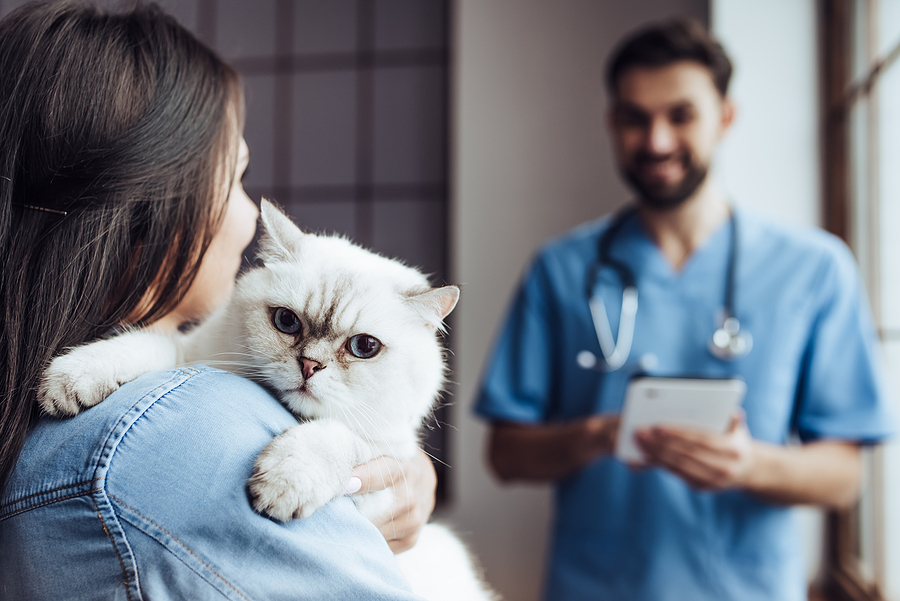
Despite more than 90 million cats in U.S. households, less than half reportedly receive yearly exams.1,2 According to a survey,3 60 percent of cat owners say they do not take their cat to the vet unless they notice something is wrong. However, cats often hide signs of pain or illness, so regular vet visits are crucial.
In honor of the “National Take Your Cat to the Vet Day” on Aug. 22, we caught up with Todd East, DVM, veterinary affairs director, Royal Canin North America, for tips you can share with clients, or apply in your practice, to help avoid the anxiety and stress often associated with a trip to your clinic.
Help clients and patients beat “pre-vet scaries” with these tips:
- Feline pheromones are your friends.Try spraying pheromone spray throughout your office to welcome your feline customers. Pheromone sprays and diffusers, placed in the waiting room and/or exam room, can help calm nervous cats by mimicking natural calming pheromones.
- Encourage annual vet appointments.As with anything, practice makes perfect so ensure you’re encouraging pet owners to schedule regular annual veterinarian appointments. The more their cats practice traveling and visiting the office, the more familiar it will become. Better yet, start early with your feline patients and encourage owners to bring them in just to be pet and get a treat so they don’t associate your hospital with needles alone.
- Offer flexible waiting areas and schedule during slower office hours. Veterinary offices can be busy and extra stressful while waiting for appointments. Try scheduling cats who are known to be more stressed during slower hours, have a dedicated cat-friendly space in your waiting room with elevated areas for their carriers, or offer pet owners to wait in their cars until their appointment starts.
- Keep calm and carry on.Try speaking to cats and their owners in a calm, soothing voice to help deescalate their mood and try playing soothing music in the waiting and exam rooms.
- Cool cats only. If you have the space, designate a cat exam room only for your feline patients. This will eliminate the possibility of any lingering canine scent and make it a more welcoming environment for your feline clientele.
- Get certified. The American Association of Feline Practitioners (AAFP) offers certification on cat-friendly strategies for your practice. Let your cat clients know you and your staff have been trained to make their experience the best it can be in your hospital.
- Virtual care. Have a client that just really has a hard time bringing their cat physically into the practice? In many cases you can manage presenting complaints virtually with the tools at your disposal. This includes nutrition. Always err on the side of caution. If you do not feel comfortable managing the case virtually, or the therapy you recommended is not improving the clinical signs, recommend they bring their cat in for a visit using the tips above.
Familiar with “pre-vet scaries”? Share in the comments what your team does in the practice to encourage pet owners to commit to regular vet appointments.
References
- American Pet Products Association’s 2017-2018 National Pet Owners Survey
- Veterinary Practice News, July 2023
- 2024 American Pet Products Association National Pet Owners Survey Stats
